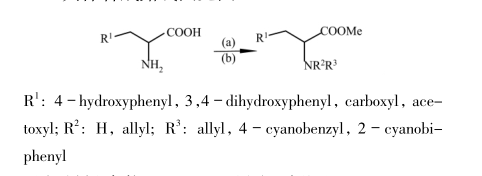Chiral Ligands of Amino Acid Derivatives
Coordination polymer is a compound formed by assembling metal ions and organic ligands through coordination bonding. It has the characteristics and unique properties of both composite polymers and coordination compounds. Its research and application have penetrated into many scientific fields, such as materials related to photoelectric and magnetic properties, molecular recognition materials, catalytic materials, biological conductive materials, biomimetic materials, adsorption and separation, and gas storage materials. Among coordination polymers, the synthesis of chiral metal coordination polymers is the most challenging. These compounds have broad application prospects in stereoselective synthesis, asymmetric catalysis, zeolite-like, fmoc-osu nonlinear optical materials, magnetic materials and inclusion compounds
Generally, people design and assemble chiral coordination polymers mainly by using asymmetric organic ligands, racemic chiral ligands or optically active ligands to assemble with metal ions to obtain chiral coordination polymers

Esterification of amino acids:
Esterification of amino acids with thionyl chloride and methanol is used to protect the amino acids and generate amino acid methyl ester hydrochloride
Using L-tyrosine, dihydroxyphenylalanine (dopa), aspartic acid and glutamic acid as raw materials, nine amino acid derivatives containing alkenyl or cyano groups were synthesized by esterification and nucleophilic substitution reaction. These compounds can be used as chiral ligands for in situ hydrothermal synthesis of tetrazole complexes and alkene copper complexes by Demko-Sharpless method
From www.omizzur.com custom peptide synthesis company in China
Copyright © 2020 Omizzur Inc | Terms & Conditions | Privacy Notice | Sitemap